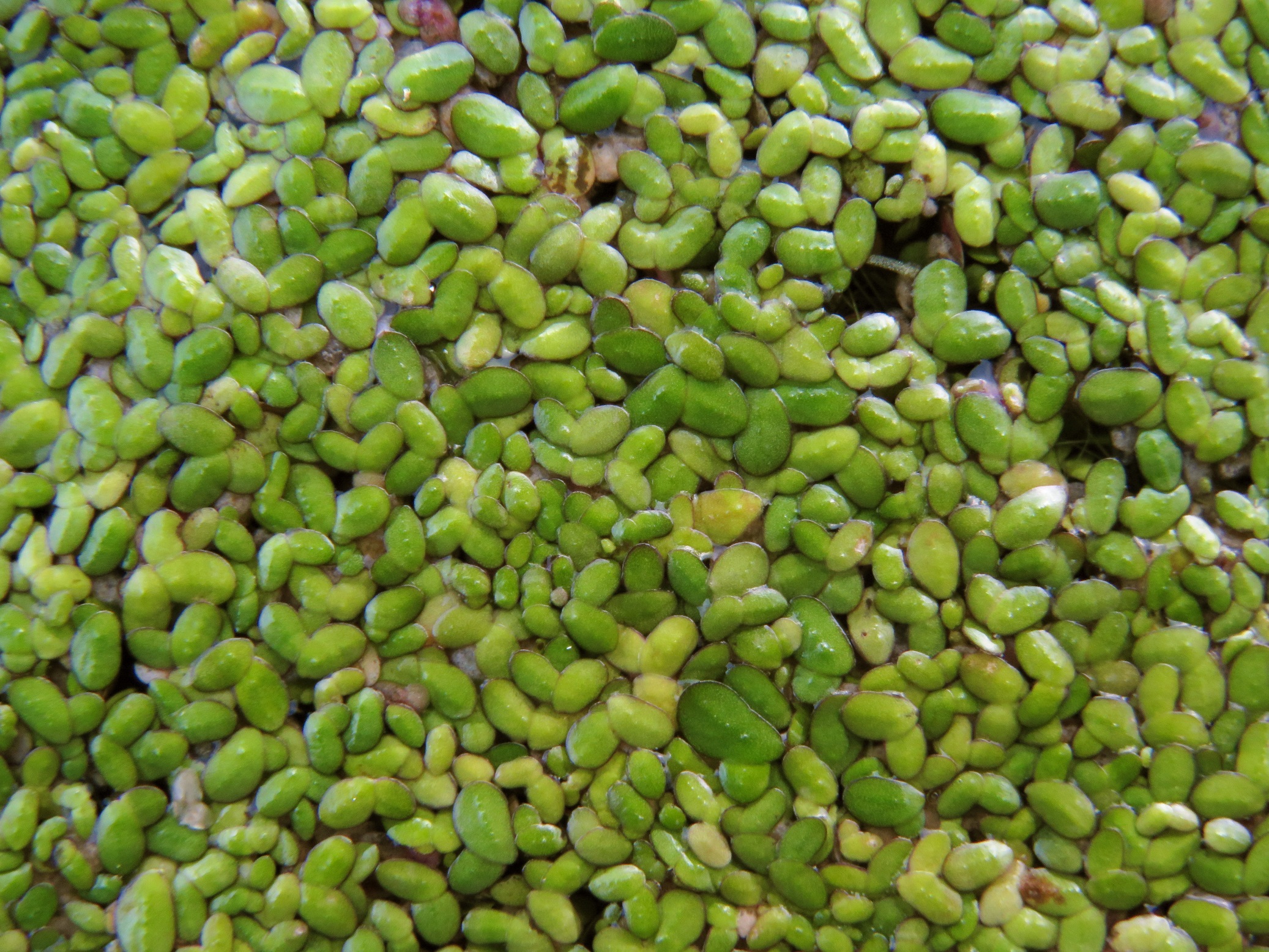
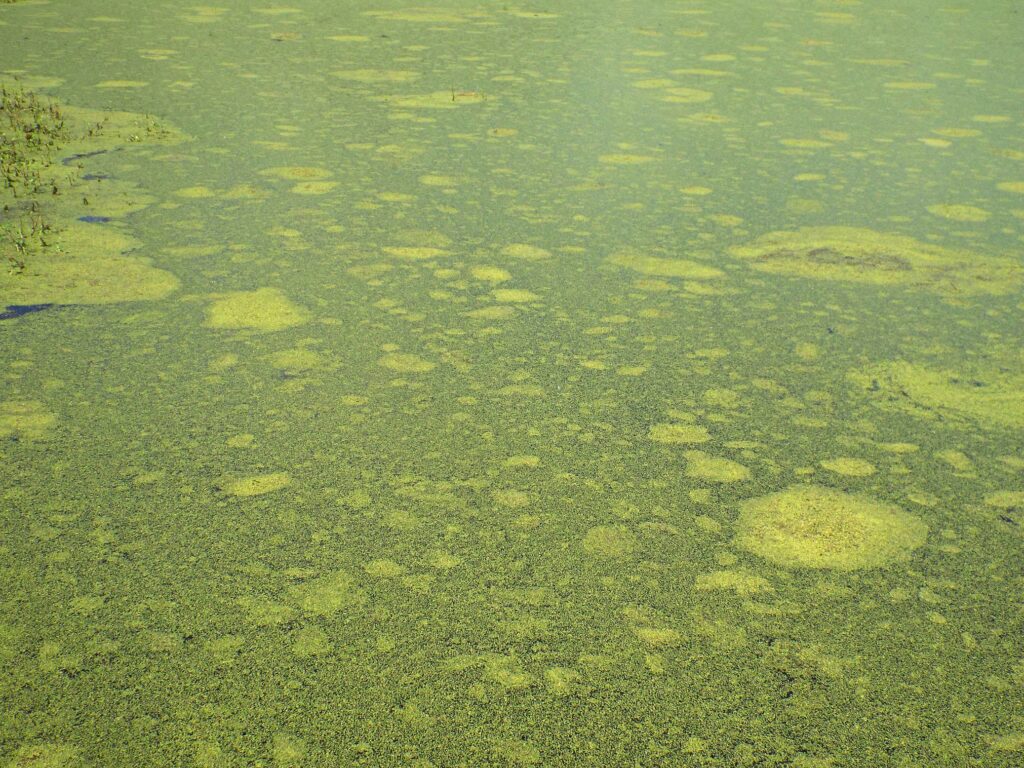
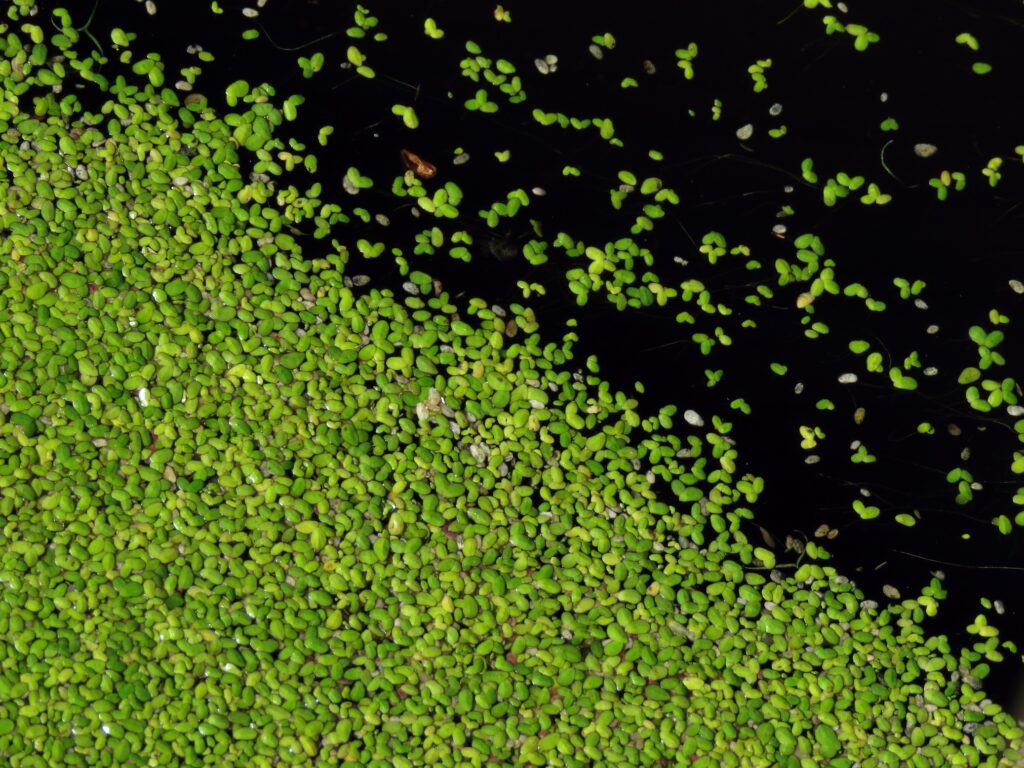
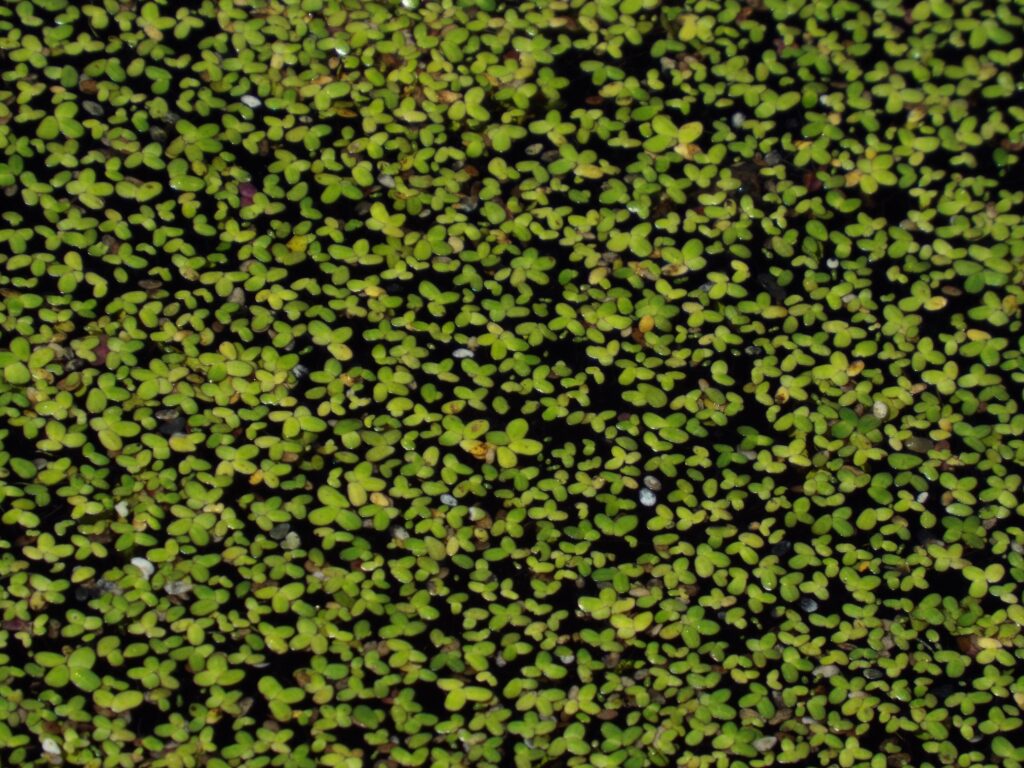
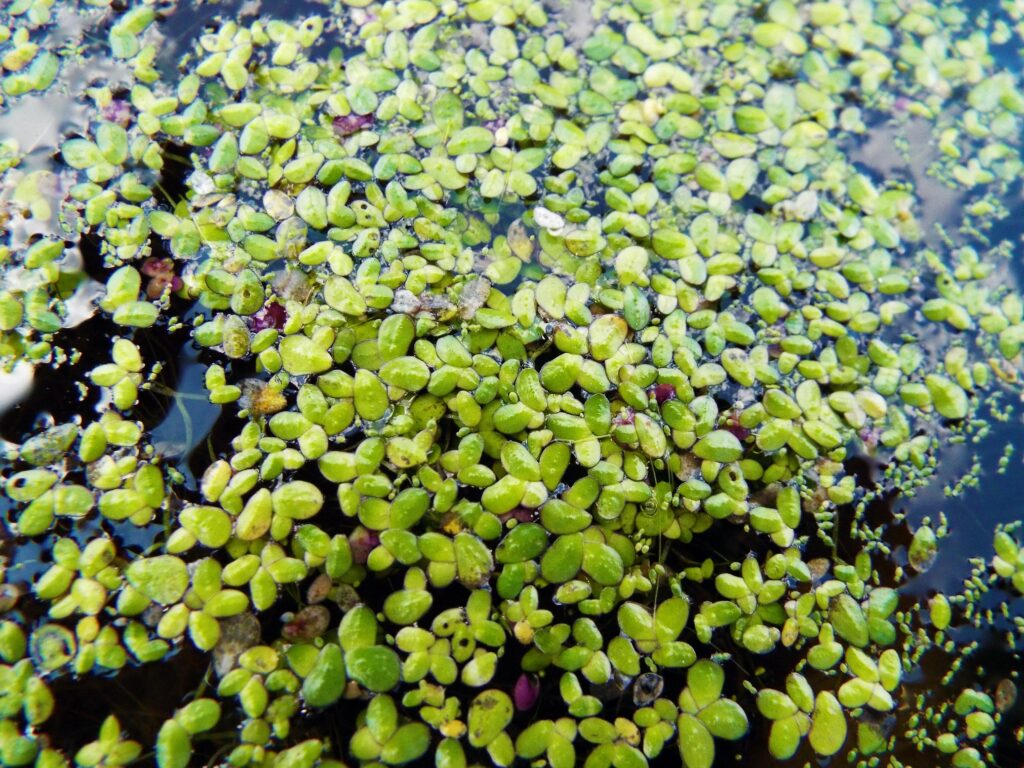
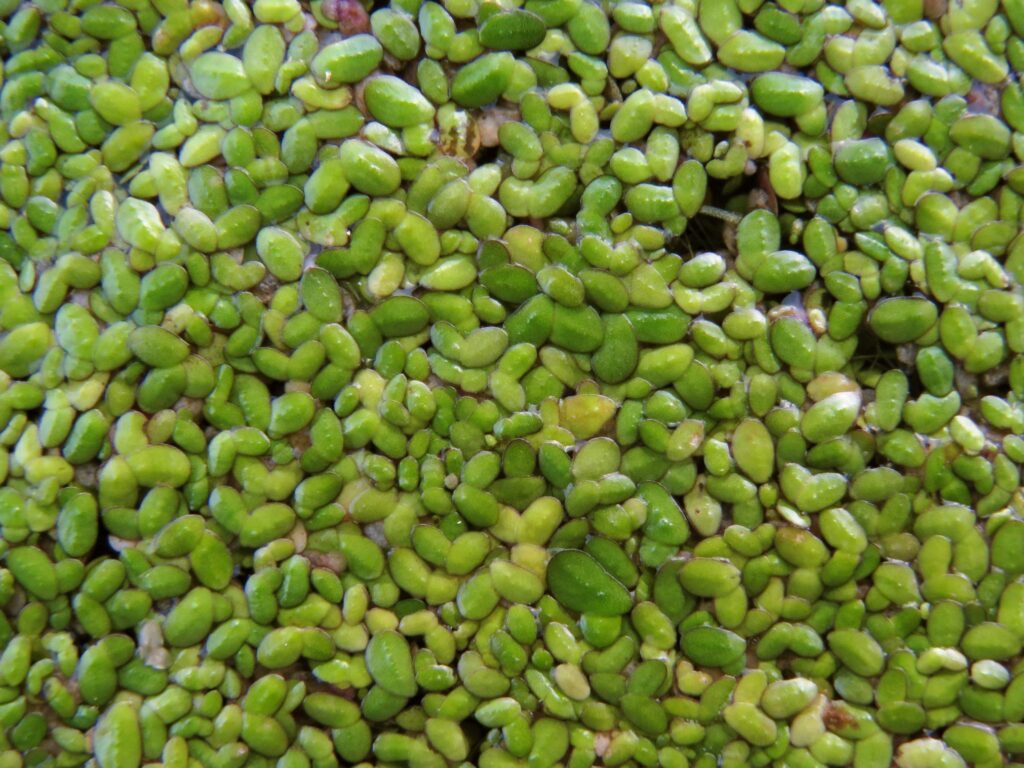
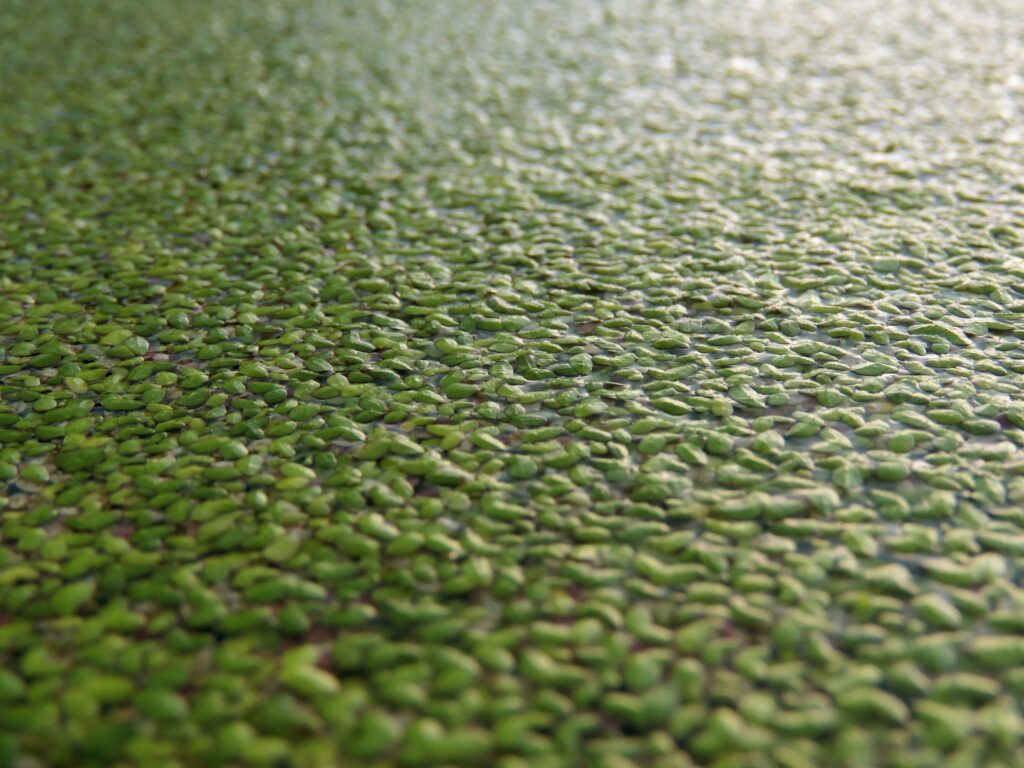
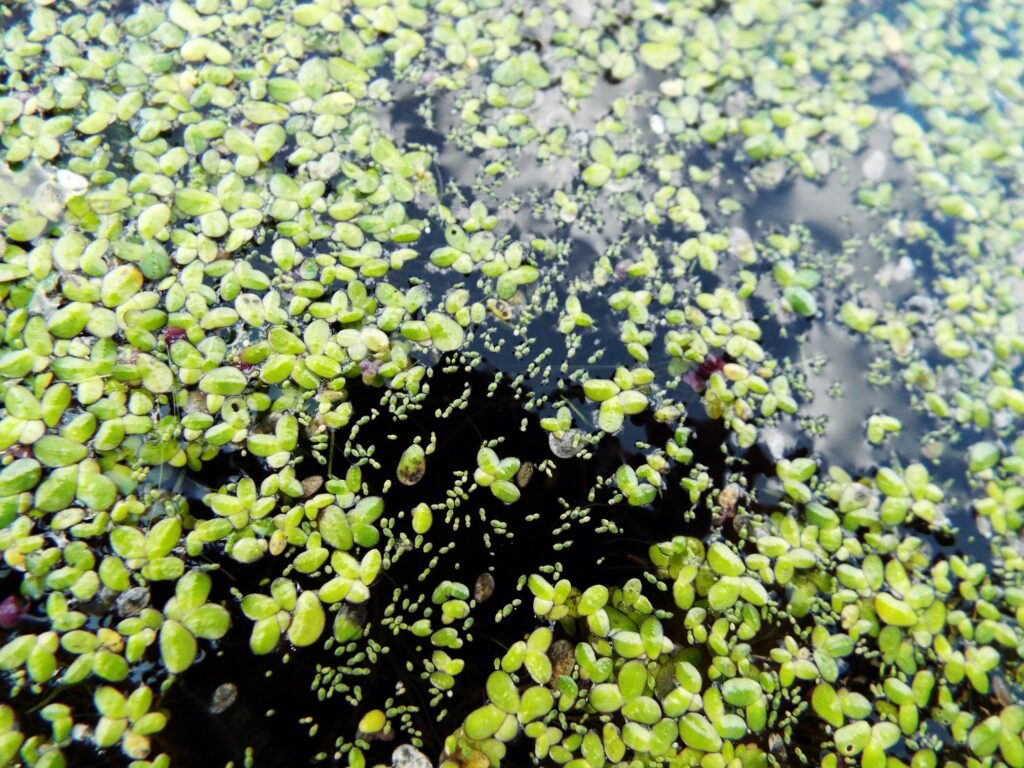
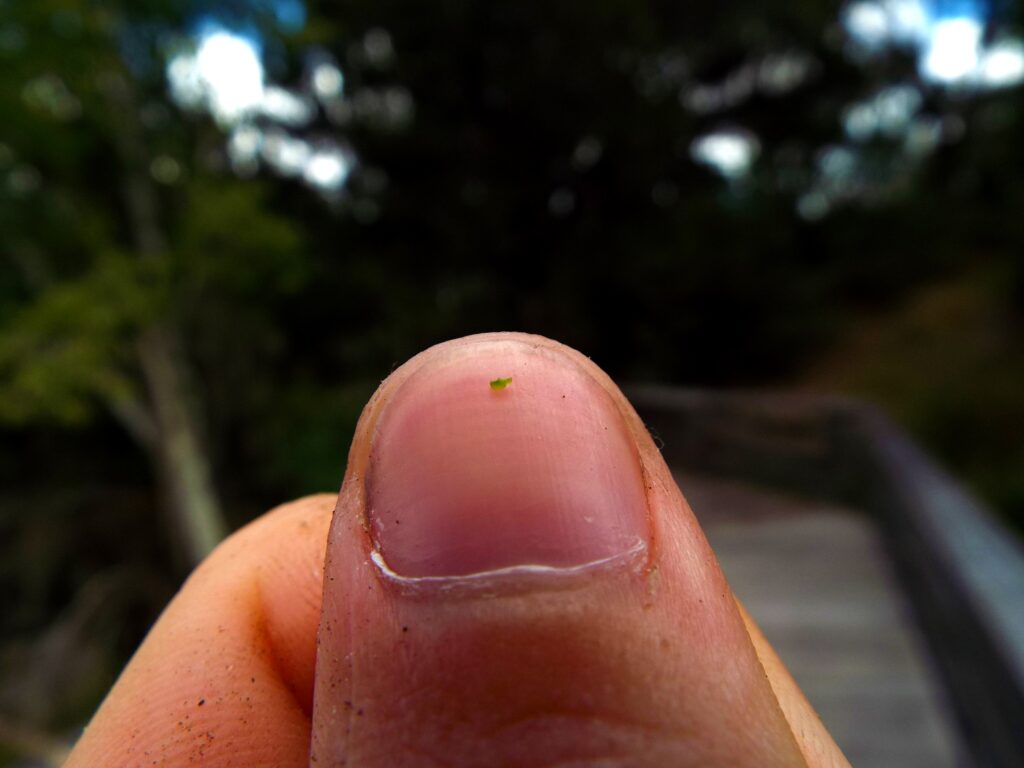
This week for Flora and Fauna Friday we’re taking a look at a group of oddball plants that you can find right here on Edisto: Duckweeds.
The Duckweeds, subfamily Lemnoideae, are a small group in the Arum family. At least one species from the five genera found in North America can be seen in our area. All are tiny, light green, floating aquatic plants that are planktonic in nature. Meaning they survive entirely within the water column and have no roots anchoring them to the soil. They live their entire lives drifting on the surface of a pond or wetland absorbing nutrients dissolved in the water. They are flowering plants so they can reproduce with seeds but they predominantly reproduce asexually via budding.
The most common species in our area is Dotted Duckweed (Landiolata punctata). This is the larger species pictured below. Individual Duckweed plants are small, light green, and roughly the size and shape of a Flax seed. Each plant has several roots of roughly a half inch long. Several plants can remain stuck together until they are ready to bud apart. They form dense, expansive mats on the surface of freshwater ponds. This species’ origins are unknown. It is certainly native to both Southeast Asia and Australia but it is unknown if it is native to the United States. Researchers don’t know if it was introduced by migratory birds or by humans. Regardless, the species is well established across the Southeast.
The most diverse genus in our area is Lemna. There are several species native to our area and all are very similar in appearance. Although they can’t be easily told apart, they can easily be separated from other members of the subfamily by having only one root per plant. The species I tend to encounter the most in our area is Lemna valdiviana.
Common Duckmeat (Spirodela polyrrhiza) is the only member of the Duckmeat genus, Spirodela, native to North America. This species is very similar to Dotted Duckweed in appearance and habitat but is a little larger and more round in shape.
Brazilian Watermeal (Wolffia brasiliensis) is our one representative of the Watermeal genus, Wolffia. Brazilian Watermeal is the smallest plant in South Carolina and the genus contains the smallest flowering plants in the world. Wolffia also hold the record for smallest flower and fruit of any plant in the world. This miniscule plant is maybe a third the width of a mustard seed. You can’t quite appreciate how small they truly are until you see them in person. These plants are rootless and float entirely above the surface of the water. They can thrive in the gaps between other Duckweed plants. Even the densest mats of Lemna, Landiolata, or Spirodela.
Florida Mudmidget (Wolffiella gladiata) is our one member of the Bogmat genus, Wolffiella. This plant is different from our other Duckweeds in its appearance and ecology. Instead of a disc that floats on the surface of the water, it resembles a sparse mop-head hanging just below the surface. These tiny floating plants are rootless and consist of only a floating rosette of thin green leaves. They are larger than our other Duckweed species but would still fit on the tip of your finger. You can just about make out a few of these in my photos below, floating beneath the Duckweeds and Watermeals.
To many, our Duckweeds are nothing more than a nuisance. That green mess covering up their backyard pond. However, Duckweeds provide a slew of benefits to fish, waterfowl, water quality, restoration ecologists, and the farmers of the future. Duckweed is insanely high in protein and has a fairly high fat and starch content. This makes it an easy and nutritious meal for many species of fish and waterfowl. Since Duckweeds have no link to the soil, they must draw all of their nutrition from chemicals dissolved in the body of water they inhabit. This makes duckweed excellent at cleaning water systems that are contaminated with sewage or agricultural runoff. As the plants grow they absorb these chemicals and process them into yet more Duckweed. Duckweed grows at an extremely rapid pace. This makes it a useful tool to restoration ecologists seeking to remove an excess of dissolved nutrients from a water body, particularly Nitrogen and Phosphorus. Duckweed will also outcompete algae for sunlight, preventing algal blooms that are dangerous to fish populations. However, if you want to clean up a body of water, you have to remove the Duckweed at the same rate it grows. Otherwise the plants will simply die, decompose, and return their nutrients back to the water. What use is there for piles and piles of Duckweed? Livestock and fish feed of course! That high nutritional content makes them a great source of food for fish farms and as a protein supplement in the diets of most livestock, especially ducks, geese, and chickens. Did I mention that all species of Duckweed are edible to not only fish, fowl, and livestock, but humans as well? Their rapid growth, high nutritional yield, ability to clean wastewater, no need for agricultural land, and counterintuitively low water requirements have led Duckweed, particularly members of Wolffia, to be touted as a potential superfood for future human civilization. I’ve never tried Duckweed myself but it apparently has a taste somewhere between watercress and spinach.
I won’t recommend that you start eating Duckweed scooped from your local swamp, not without a thorough washing at least, but Duckweed salads may make their debut in a restaurant near you sometime soon.